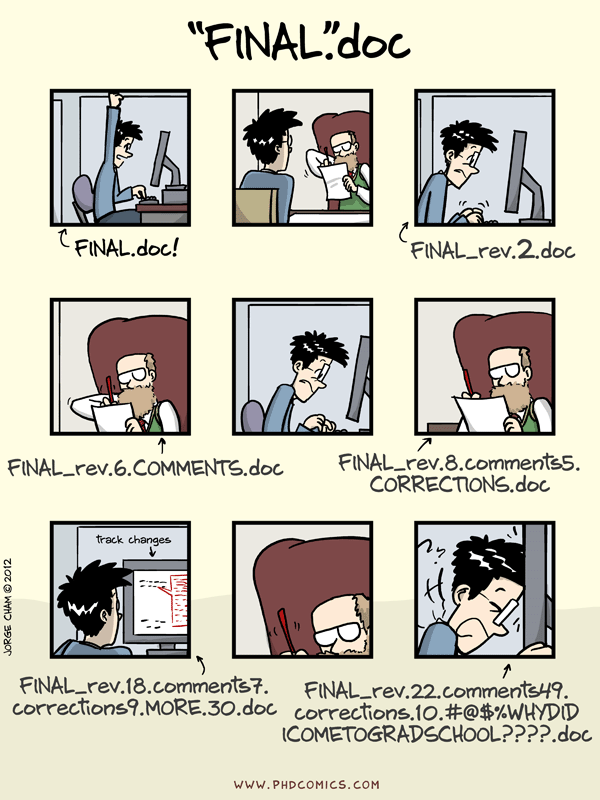What Can We Do With Digital?
Texts to have read:
- The syllabus and grading contract
- Sorapure, “Five Principles of New Media: or, Playing Lev Manovich”
- Wesch, “Information R/evolution”
Writing to turn in:
- A post to the main course issue queue, introducing yourself to your classmates (and anyone else who stumbles upon it)
Plan for the Day
- The Newness of New Media: Five Principles, in Brief (~15 min)
- GitHub and Git (~15 min)
- Five Principles as Lenses (~15 min)
- Shareback (~15 min)
- HW Preview
Welcome back!
1. Five Principles, in Brief
Can I get five people to fill us in on the five “principles of new media” from the webtext I asked you to read? i.e. One person, one term.
Let’s take notes here: http://bit.ly/cdm2020fall-notes
2. GitHub, part 2
Last time, we saw that GitHub can host a discussion forum, so in that sense it’s a community website: it makes media social.
But its core functionality is meant to solve a different media problem:

3. Five Principles as Lenses
Time to take these abstractions and put them into practice, in two ways:
- practice using GitHub
- practice using our key terms to help us see differently
We’ll be working in groups. I’ve used your Tech Comfort Survey responses to build breakout rooms where at least one person has prior GitHub experience, so I hope you’ll be able to help each other where needed!
We’ll work in Breakout Rooms for 10-15 minutes, then report back. Don’t forget that you can use Zoom chat and screenshare to your advantage.
Call me if you need me! Otherwise, I’ll be floating from group to group.
HW for next time:
- Watch Git and GitHub for Poets, starting at least with
the Introduction and going as far as your interest and time allow.
- I also especially recommend 1.5 / intro to the command line and 1.6 / clone, push, pull, though the latter gets a little long-winded… But then, that’s what 1.5x playback is for, am I right?
- Practice following the steps in the video, using either a .txt file or a .md file: create a repository on GitHub, add some content to a file, commit, edit it, commit again, and view the history. Next class we can start with any questions that came up for you in the process.
- If you’ve used GitHub a lot, you may want to play around with Markdown formatting. Do you know what happens if you embed html inside a Markdown file? Or Markdown inside an html block?
- I highly recommend you download the GitHub Desktop application, available for MacOS or Windows, which (like the command line interface) has some essential features that are unavailable on the GitHub website.
- Definitely be sure to download a plain text editor: I recommend Atom, but if you already use Notepad++ or SublimeText or something like that, you’re fine.
- Optional, but encouraged: install command-line git, probably using either GitBash (for Windows) or Homebrew (for Mac) – or see this [walkthrough of how to install git using GitHub Desktop](https://www.techrepublic.com/article/how-to-install-github-desktop/#:~:text=That’s%20right%2C%20even%20though%20GitHub,install%20Git%20(Figure%20B). (Linux users, I assume you don’t need further instructions.)
- Optional: Want a more hands-on guide through the full GitHub functionality? See the GitHub Learning Lab entry on our Resources page.